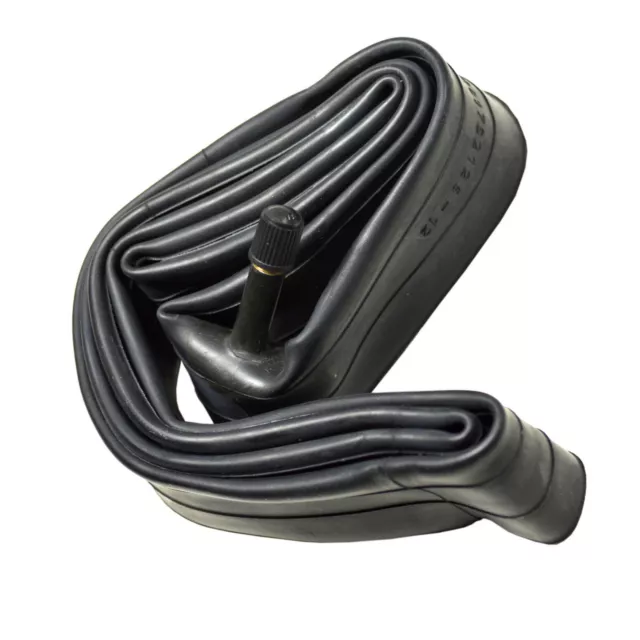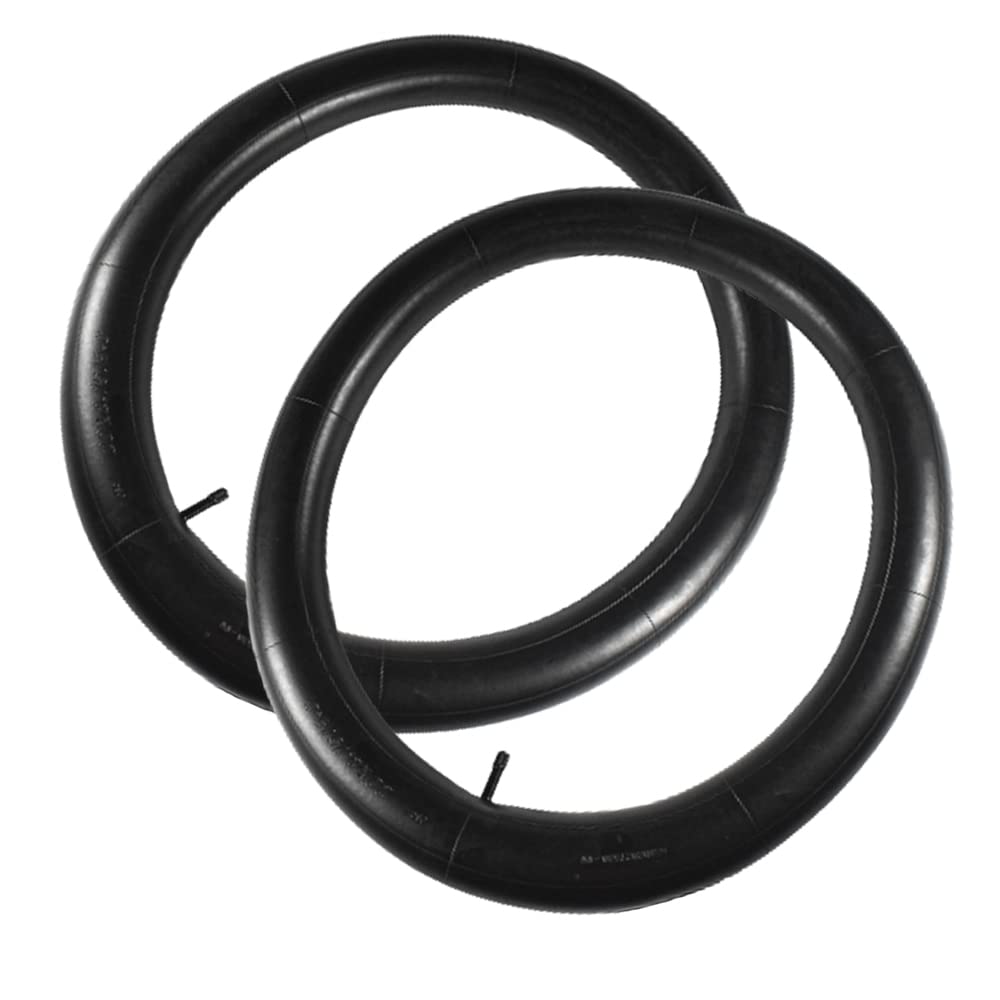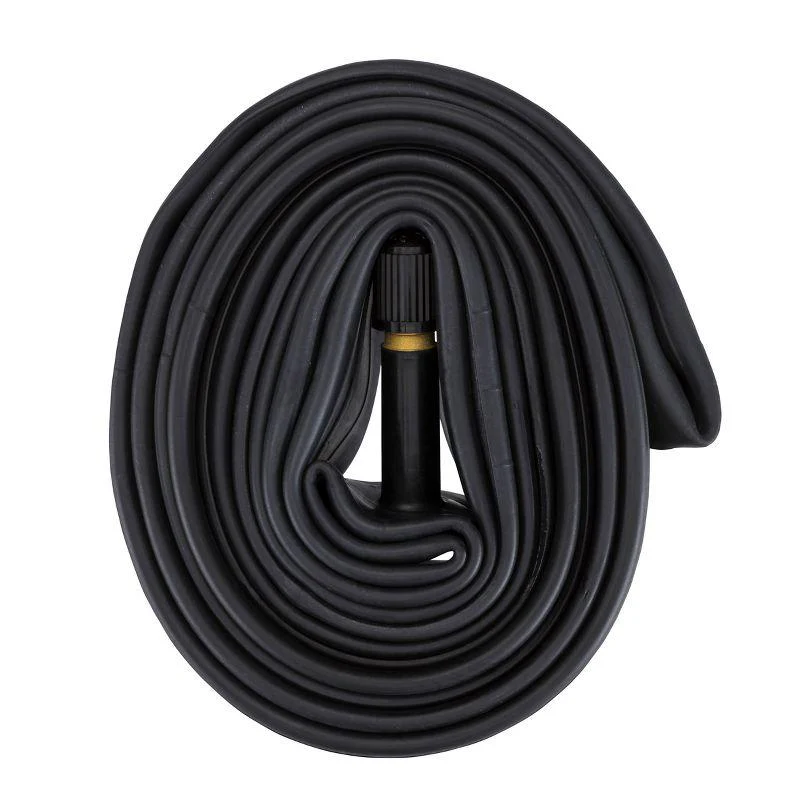I. Understanding Bicycle Tire Tubes

A. What Are Bicycle Tire Tubes?
Bicycle tire tube is an essential component of a bike’s tire system. They are the inflatable, doughnut-shaped rubber chambers that sit inside the tire casing and hold the air pressure, providing the necessary rigidity to support the weight of the rider and the bike. These tubes are crucial for maintaining proper tire pressure, which affects the bike’s performance and comfort during rides.
B. Types of Bicycle Tire Tubes
There are several types of bicycle tire tubes available on the market, each designed to suit different styles of bikes and riding conditions. The most common types are:
- Presta Valve Tubes:
These tubes feature a narrow, threaded stem, and are commonly found on road bikes and higher-end mountain bikes. - Schrader Valve Tubes:
Featuring a wider, more robust stem, Schrader valves are similar to those found on car tires and are often used on city bikes, children’s bikes, and entry-level mountain bikes. - Tubeless-Ready Systems:
An increasingly popular option, tubeless systems eliminate the need for inner tubes by using a special tire and rim combination, sealed with liquid sealant to maintain air pressure.
II. Selecting the Right Bicycle Tire Tube
A. Sizing and Compatibility
When it comes to bicycle tire tubes, it’s crucial to ensure that you select the right size and compatibility for your specific bike tires. Using the correct tube size and type will not only ensure a proper fit but also contribute to the overall safety and performance of your bike.
First and foremost, you need to determine the correct tire size for your bike. This is typically printed on the sidewall of the tire and will be in the format of a series of numbers, for example, 700x23c or 26×2.0. The first number in this sequence represents the wheel diameter, while the second number denotes the tire width in millimeters. It’s important to match the tire tube size to these specifications for a secure and snug fit.
Furthermore, when selecting a bicycle tire tube, you need to consider the type of valve that your bike’s rim accommodates. There are two main types of valves – Schrader and Presta. Schrader valves, which are similar to the valves found on car tires, are wider and more commonly used on mountain bikes and some hybrid and kids’ bikes. Presta valves, on the other hand, are narrower and longer with a built-in valve cap and are often found on road bikes and high-performance bicycles. It’s crucial to select a tube with the corresponding valve type that matches your bike’s rims to ensure a proper seal and inflation.Ultimately, ensuring the sizing and compatibility of your bicycle tire tube is essential for a secure fit and optimal performance.
B. Valve Types

As mentioned earlier, there are two primary valve types used in bicycle tire tubes – Schrader and Presta. Understanding the differences between these valve types will help you make an informed choice when selecting the right tube for your bike.
Schrader valves are similar to the valves found on car tires and are wider and more robust compared to Presta valves. These valves are commonly found on mountain bikes, hybrid bikes, and some children’s bicycles. They are easy to use and are often favored for their durability and simplicity. To inflate a tire with a Schrader valve, you simply need a standard air pump or a gas station air pump, making them convenient for most riders.
Presta valves, on the other hand, are longer and narrower with a built-in valve cap. They are commonly found on road bikes, high-performance bicycles, and some mountain bikes. Presta valves require a pump with a small screw-on chuck to inflate, and they feature a locking nut at the base of the valve stem that needs to be unscrewed before adding air and then tightened after inflating. While Presta valves require a bit more care during inflation, they are generally lighter and allow for higher air pressure, making them a popular choice for many cyclists.
When selecting a bicycle tire tube, it’s crucial to match the valve type to the one that corresponds with your bike’s rims. Using the wrong valve type can result in improper inflation, air leakage, and sealing issues. By ensuring that you choose a tube with the correct valve type, you can maintain the integrity and performance of your bike’s tires.
III. Maintaining Bicycle Tire Tubes
A. Proper Inflation and Pressure
Maintaining the correct tire pressure is essential for both performance and safety. Underinflated tires can lead to increased rolling resistance, making it harder to pedal, while overinflated tires can result in a harsh and uncomfortable ride. To find the optimal tire pressure, refer to the recommended range, typically imprinted on the tire sidewall. Factors like rider weight, terrain, and tire size can also influence the ideal pressure. Using a reliable floor pump with a pressure gauge is the best way to ensure accurate inflation.
B. Regular Inspection and Maintenance
Regular maintenance of bicycle tire tubes contributes to a longer lifespan and enhances overall safety. Periodically inspect the tires and tubes for signs of wear, cuts, or embedded debris that could cause a puncture. Additionally, check the valve stems for any damage or leaks and ensure they are tightly secured to the rim. Replace the rim tape if it shows signs of wear or damage.
IV. Repairing and Replacing Bicycle Tire Tubes
A. Patching a Punctured Tube
Punctures are a common occurrence when cycling, but they are typically easy to repair. To patch a punctured tube, start by locating the puncture and inspecting the tire to ensure that whatever caused the puncture isn’t still embedded in the tire. Once removed, use a patch kit, which typically includes sandpaper, a patch, and rubber cement, to repair the hole.
B. Installing a New Tube

In cases where the puncture is too severe to repair or the tube is old and worn, installing a new tube is the best option. To replace the tube, start by removing the wheel from the bike and then extracting the tire and old tube. Before installing the new tube, inspect the inside of the tire for any sharp objects or debris that may have caused the puncture, remove them if found, and check the rim tape for damage.
V. Tips for Extending the Lifespan of Bicycle Tire Tubes
A. Proper Storage
Proper storage of bicycle tire tubes is crucial to prevent damage and deterioration. When not in use, tire tubes should be stored in a cool, dry place away from direct sunlight and extreme temperatures. Exposure to sunlight and heat can cause the rubber to degrade and weaken over time.
It’s important to also keep tire tubes away from chemicals and solvents, as these can deteriorate the rubber and cause premature wear. By ensuring that tire tubes are stored properly, cyclists can prevent unnecessary damage and extend their lifespan.
B. Best Practices for Riding and Maintenance
- Proper Tire Inflation:
Maintaining the correct tire pressure is crucial for the longevity of tire tubes. Under-inflated tires can cause excessive wear on the tubes, leading to punctures and blowouts. On the other hand, over-inflated tires can increase the risk of pinch flats. Cyclists should regularly check and maintain the proper tire pressure recommended by the manufacturer. - Avoiding Road Hazards:
While riding, cyclists should be mindful of potential road hazards such as potholes, sharp debris, and rough terrain. Avoiding these hazards to the best of their ability can help prevent punctures and damage to the tire tubes. - Regular Inspections:
Routinely inspecting the tire tubes for wear, cuts, and punctures is important for catching potential issues early on. By identifying and addressing any damage promptly, cyclists can prevent further damage to the tubes and extend their lifespan. - Proper Installation:
When replacing tire tubes, it’s essential to ensure they are installed correctly to prevent pinching or damage.
In conclusion, understanding the fundamentals of bicycle tire tubes, including their purpose, types, and how to select the right one, is crucial for every cyclist. By knowing the essentials of bicycle tire tubes and making informed decisions when purchasing and maintaining them, cyclists can enhance their riding experience, minimize disruptions, and ensure a safe and enjoyable journey on two wheels.
